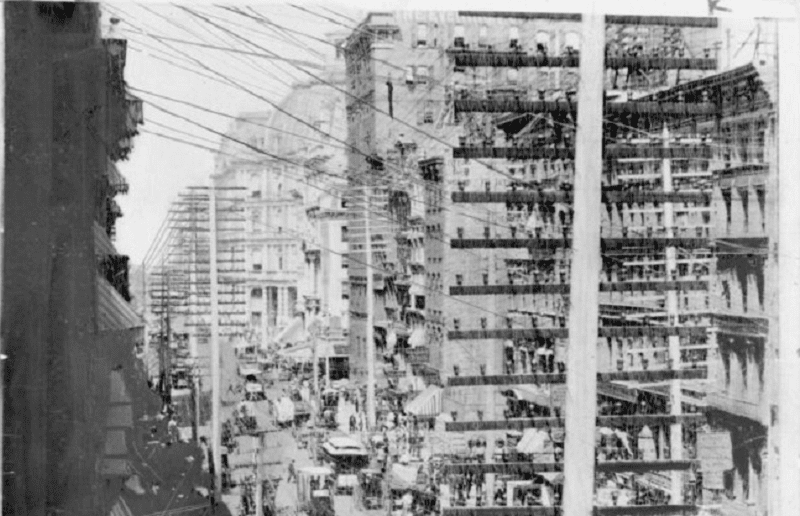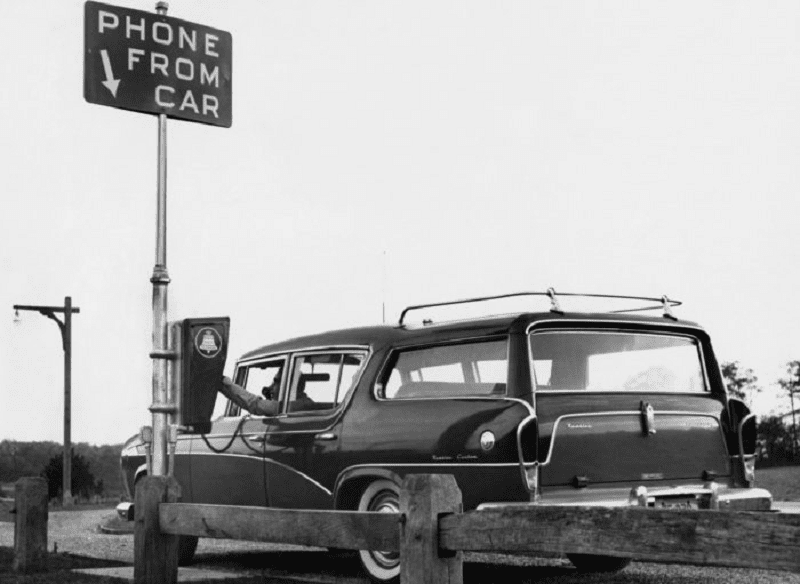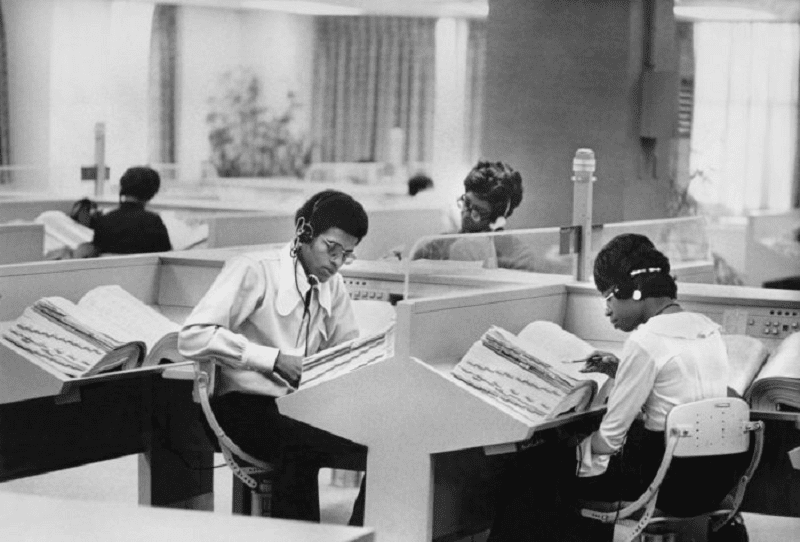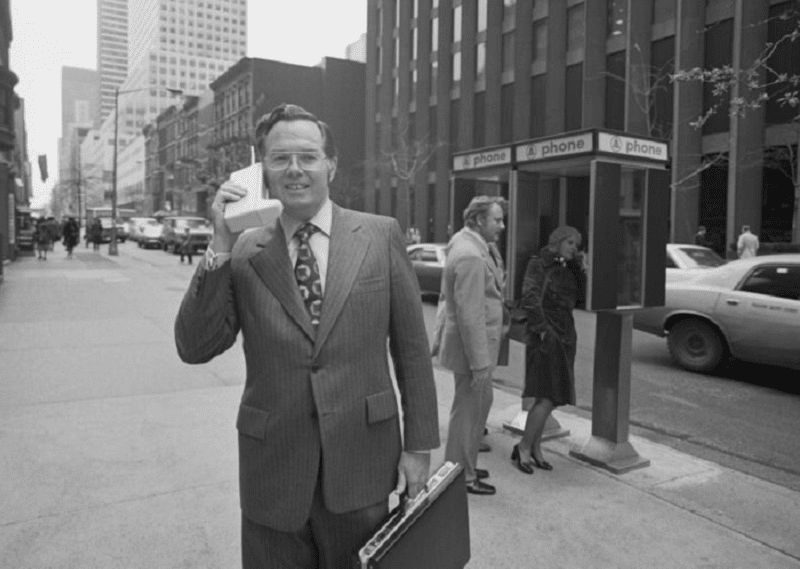It seems that only recently there were telephone booths all over Manhattan, but by the 20s of the twenty-first century they were gone. The latter were replaced by more convenient mobile phones. Although the last telephone booths were removed from the streets of Manhattan several decades ago, the history of telephone communication will always live on. Read more on manhattan-future.
In 1926, the major New York Telephone Company established its new headquarters at 140 West Street in Manhattan. The building is a unique example of the Art Deco style of architecture. It took five years to build and required excavation to a depth of seventy feet (or 21 meters). The construction of this building was characterized by prominent people of the city as a monument to a new era of construction of high-rise buildings (skyscrapers), redefining the entire skyline of Manhattan and New York.
The construction of the headquarters of a major New York telephone company was highly praised by Manhattan critics. One of these critics, Lewis Mumford, considered the construction of such a building to be a model of modern business with all the basic features, and the headquarters had no shortcomings.
The need to develop telephone service in Manhattan
With the development of technology, Manhattan needed to build a commercial long-distance telephone system. That’s why an American telephone and telegraph company (whose first name was AT&T) decided to make the city’s first transcontinental phone call (and one of the first in the United States). A conversation took place on January 25, 1915, between Alexander Graham Bell (who was based in New York) and Thomas A. Watson (A. Graham Bell’s longtime assistant and doctor, who was based in San Francisco). The distance between which the communication was established reached 3400 miles (up to 5500 kilometers).

[A tangled network of telephone and telegraph wires forming an aerial maze above Broadway and Maiden Lane in Lower Manhattan. Photo source: https://www.imena.ua/]
Although the call was an element of a typical advertising method, it marked the beginning of the main stage of telephone development in Manhattan. This long-distance call between A. G. Bell and T. A. Watson became the basis for laying the foundation for Theodore Vail’s (who was the president of AT&T) corporate vision of universal service.
Universal service, which then began to appear in Manhattan, tied the network company’s subscribers to the nearest facility of the local Bell Telephone Company (which was already located throughout the country at that time). This was the only way for citizens to communicate via the AT&T network, which was the only and most powerful long-distance service provider at the time.
What company laid the telephone lines in the city?
The Verizon Building (also known as the Barclay–Vesey Building) is located at 140 West Street in Manhattan. This building was the first to create a connection for the new generation of tall telephone buildings that were being built in New York City and across the United States during the 1920s. It redefined the public importance in the development of modern telephone networks through its progressiveness, efficiency and pragmatism.

[Photo source: https://www.imena.ua/]
The twentieth century saw frequent changes in technology, especially the development of long-distance telephone communication, which generally changed the role of the telephone in everyone’s daily life. These circumstances prompted the company that laid the telephone lines in Manhattan to develop a new type of building. The latter was supposed to ensure the functional balance of the telephone infrastructure in the city.
For a long period of time, Manhattan’s networked skyscrapers were a testament to corporate confidence. But it was the New York Telephone Company that launched communications work in Manhattan with some caution. Initially, the Barclay–Vesey Building dwarfed the surrounding neighborhoods in the city, as the multi-storey structure towered over the adjacent Washington Market, four- and five-storey commercial buildings lining Hudson Street.
The new tower in Manhattan did not look like any other building in the city. It did not blend in with the environment or with the architectural styles of the surrounding buildings. The original complex, called the New York Telephone Building (which was located at Cortlandt and Broadway but was demolished), was designed by Eidlitz & McKenzie in the 1880s and 1890s. Not only did it resemble other groups of historic office buildings in this area of Manhattan, but it also managed to enter the city’s network space by building the first of a series of telephone company buildings called the city giants.
The culmination of telephone communication in the city
The twin Long Lines and Western Union buildings of the 1920s were an important milestone in the development of telecommunications in Manhattan. They were built on West Broadway, namely in the southern part of Canal Street (Manhattan). In 1914, AT&T and Western Union decided almost simultaneously to move to the offices of the Walker-Lispenard building. In the new location, the telecommunications giants competed for competitive space, as the city was highly competitive in long-distance, telegraph and radio communications.

[James Bracey was one of the men who worked at the Bell System help desk in the early 1970s. Photo source: https://www.imena.ua/]
Despite the fact that the two companies had a fairly convenient location (vertical and horizontal expansion), already in the 1920s, AT&T and Western Union needed to expand their office space. The companies decided to split. For this reason, VGW created new building projects for each of these corporations. For example, Western Union was located in the middle of Manhattan at 60 Hudson Street.
AT&T, which had its office in Manhattan, where it serves the city’s subscribers, decided to expand as well. Thus, according to the project, the company reconstructed the then-existing Eidlitz & McKenzie Long Lines Building, which in 1932 turned into a modern building at 32 Avenue of the Americas.
Both towers, Long Lines and Western Union, are examples of the seamless integration of Manhattan’s infrastructure and technology into a more modern context. These structures were originally used to house an interconnected series of cable vaults and pneumatic pipes that in turn ran through tunnels under the streets of Manhattan. They were the centers of telephone communication in the city, housing generators, batteries, switchboards and antennas and employing thousands of workers.

[Martin Cooper demonstrates his development of a personal wireless phone. Photo source: https://www.imena.ua/]
First call from a personal wireless phone in the city
The first call from a personal wireless phone in Manhattan was made on April 3, 1973, between Martin Cooper, a top manager at Motorola, and a friend. It was his personal development, which Cooper designed himself. The man went with him to Sixth Avenue, which is located in the center of Manhattan, where he made the first call using such a device. He dialed the number of Bell Laboratories in order to mock the competition.
It was the world’s very first public call made from a wireless cell phone. It was not at all like a modern phone for us – the device was completely handmade by one person who assembled up to a thousand parts by himself… That’s how telephone communication appeared in Manhattan.